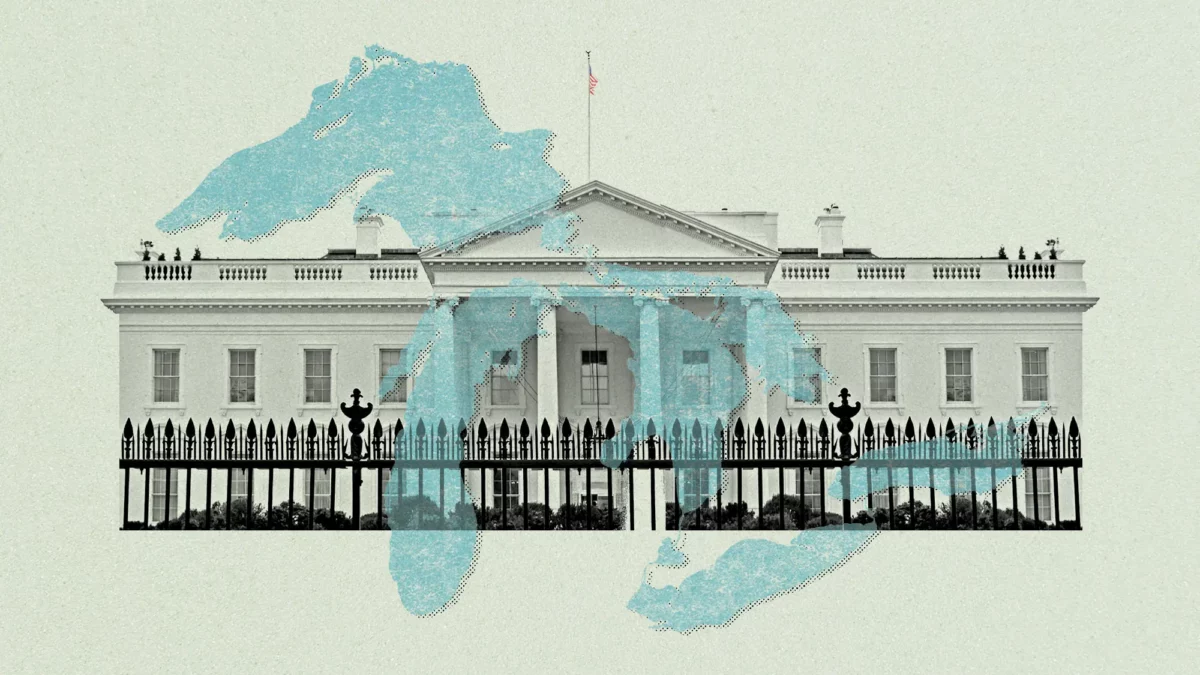Overview:
- Vice President JD Vance, a key advocate for the Great Lakes Restoration Initiative, now faces a significant hurdle as the Trump administration halts billions in funding from two major programs initiated by former president Joe Biden.
- The initiative, dedicated to the protection and restoration of the Great Lakes, has supported over 8,000 projects, including microplastics research, algal bloom control, and climate-resilient shorelines.
- Supporters are hopeful that Vance can preserve the GLRI amidst a challenging political landscape.
“This story was originally published by Grist. Sign up for Grist’s weekly newsletter here.”
This coverage is made possible through a partnership between Grist, Interlochen Public Radio in Northern Michigan, and WBEZ, a public radio station serving the Chicago metropolitan region.
Last year, Vice President JD Vance, then an Ohio senator, was part of a bipartisan coalition calling to increase funding for the Great Lakes Restoration Initiative, or GLRI — among the country’s largest investments aimed at protecting and restoring the Great Lakes.
“The Great Lakes Restoration Initiative delivers the tools we need to fight invasive species, algal blooms, pollution, and other threats to the ecosystem,” said Vance, who was co-chair of the Senate Great Lakes Task Force when the reauthorization bill was announced. He voted to extend and increase funding for the project until 2031.
“This is a commonsense, bipartisan effort that I encourage all of my colleagues to support,” Vance said.
Advocates hope he hasn’t changed his mind.
The five Great Lakes — Superior, Michigan, Huron, Erie, and Ontario — represent the largest freshwater ecosystem in the world and a source of drinking water for about 10 percent of the country’s population. Since 2010, the massive GLRI spending package has helped fund everything from microplastics research to algal bloom elimination to climate-resilient shorelines. Just this week, Democratic Senator Gary Peters of Michigan and Republican Senator Todd Young of Indiana introduced a bill that would reauthorize funding at $500 million per year for the next five years. Politicians often point to the initiative as proof that they can agree on conservation and environmental issues.
But its future may be at risk. The last time Trump was in office, his administration tried and failed to slash or even eliminate GLRI funding several times. Now, Trump is taking aim at environmental spending, including funding for programs tied to environmental justice and climate change. Vance has changed course on environmental issues as he has risen through the political ranks, such as his support for coal, electric vehicles, and even what he’s said about human-caused climate change. He also invested in and sat on the board of the disastrous indoor farming operation AppHarvest. Advocates hope that Vance might save the GLRI despite a hostile political environment.
Already, the Trump administration has frozen billions of dollars from two major initiatives passed under former president Joe Biden: the Inflation Reduction Act and the bipartisan infrastructure law. Amid escalating uncertainty around federal support, Illinois Governor JB Pritzker preemptively halted construction earlier this week on a billion-dollar megaproject to prevent the spread of invasive fish in the Great Lakes. But Trump’s blocking of federal funds for climate and DEI initiatives could put him at odds with longstanding bipartisan support for the Great Lakes — including from Vance.
“We know [Vance] supports Great Lakes restoration and protection,” said Laura Rubin, the director of Healing Our Waters–Great Lakes Coalition, a Michigan-based advocacy organization for federal environmental policy. “He was a champion of it, and we’re hoping that translates into his role as vice president.”
The vice president’s office did not respond to Grist’s requests for comment.





